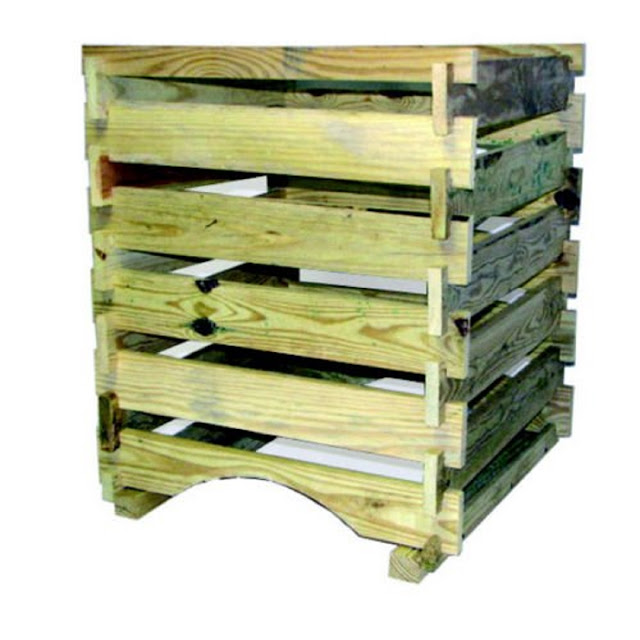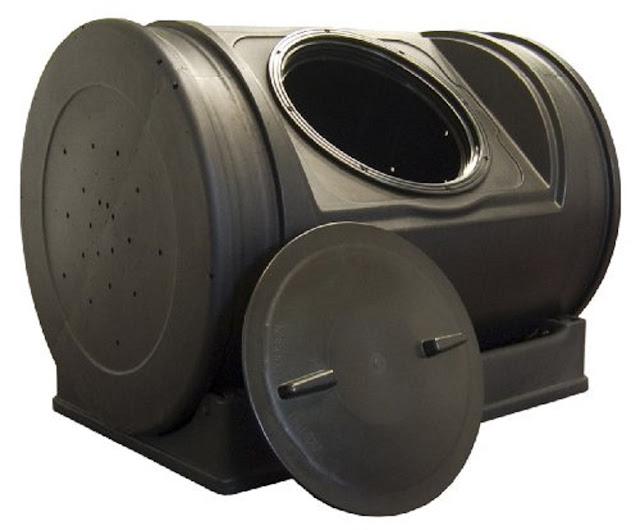How To Compost at Home
How To Compost at Home - When you recycle your yard waste by making compost you will have a supply of material to enrich the garden soil each year. Less waste will have to be carted away, and the dirt of your yard will benefit from the improved structure that this good fresh crumbly material will provide.
If you also compost your kitchen waste you will not only have soil-enriching material for the garden. You’ll also reduce the amount of waste sent out with the garbage collection. In fact, even though only vegetable waste (not meat or fatty products) should be put in the compost pail, you might be quite surprised at the extent of this reduction.
It is important to remember that composted garden and kitchen waste do not feed the soil to the same degree as manures and other fertilizers.
Certainly, the mix will contain some nutrients but the main garden benefits of composting come from improved soil conditions, especially if the local earth is basically sand or clay. It will increase the ability of the soil to hold moisture and nutrients and help towards your having a garden full of healthy plants.
What Can You Compost?
Later in this article, we will mention different methods and techniques of composting, as well as starting a compost pile of the most basic sort. Whatever equipment you use it is best to try for a balance of
- Green (such as grass clippings and plants past their best) and
- Brown (that is, woody, chopped small materials).
If you also add a variety of kitchen vegetable waste plus things like eggshells, paper wipes, used tea bags and coffee grounds you should get some excellent composted material to spread as mulch and to dig back into the earth.
Depending on what time of year you start composting, and the rate at which material breaks down in your climate, you may have to wait until the second year before starting to add the product of your composting back into the soil. This is also affected by the precise mix of materials.
A lot of wood, unless chopped or shredded to small-sized pieces, will take much longer than the green components. This also applies to leaves from trees, so in the Fall it is best to put only a small amount of leafy material on the compost heap and reserve the majority for a separate cage to make leaf mold.
Recycling Kitchen Scraps
A kitchen compost bin is a useful tool but is not essential. You can simply collect the waste in any container, even an old plastic bag, and once or twice each day take it out to wherever you’re processing your garden waste in the yard. (But don’t put the plastic bag in the composter).
If, however, the composter is quite a distance away from the kitchen door you might prefer to have a purpose-designed indoor compost pail that needs to be emptied less frequently. During bad weather, even a short trip to the outdoor composter can seem far too long!
Younger members of the family will quite possibly have been introduced to the benefits of composting at school along with other topics related to recycling and environmental responsibility.
It might be necessary, though, to give a little education to those older members of the family who use the kitchen most. Gradually, however, you should see the container filling more quickly so that it has to be emptied several times a week.
How to Start Composting
Starting a compost pile could scarcely be easier. At its simplest, it need be no more than a pile of green garden waste, grass trimmings, and shrub prunings. Building a compost bin needs to involve little more than surrounding your pile with some old planks of wood or bricks to hold the material in place. This does not have to be complicated.
The image here shows a commercially available model from Bosmere, but something similar can be built by anyone who is reasonably handy with some lengths of wood, a saw, a hammer, and some nails. If that doesn’t describe you then you can make life a bit easier by buying a self-assembly kit.
In fact, you don’t really need anything as solid as this; to hold the material in you could simply wrap chicken wire around a few stakes in the ground and pile grass cuttings, chopped twigs, etc inside.
Choosing a Compost Bin or Composter
You can get plastic bins into which you pile new material at the top and shovel out well-rotted compost from the bottom. These work more or less the same as the wooden type described above.
How much it is sensible to invest in one of these plastic constructions will depend on the volume of material you’re likely to be processing and the intensity of its use.
On this site, we list a number of compost bins, mostly of plastic construction although including some traditional wooden types.
Reviewers have on occasions criticized some of the models but my feeling is that in most cases this is because the wrong type has been chosen for the situation.
If you’re only going to have a little compost and use the bin rarely, then a cheaper model of light construction may be adequate for you. If, on the other hand, you have a big garden and do a lot of composting then you should go for a more sturdy construction – and usually, that means spending a little more. Or maybe you’ll go for a tumbling composter.
Should You Buy A Compost Tumbler?
The problem with the simple container types of compost bin is that it can be quite difficult to stir the material inside. This is necessary to provide aeration and to even out the mix of different materials added.
Many people prefer to have a composter that requires less strenuous exertion and that mixes its contents by turning, either on a stand or on rollers.
This certainly makes mixing and aeration much easier and often speeds up the decomposition process so that you don’t have to wait until the following year to use what you’ve produced.
Should you invest in a tumbler rather than a fixed bin? Well to my mind it depends chiefly on the answers to two questions.
- How much compost do you want to make, and how quickly? A tumbling composter will usually give faster decomposition and therefore free the barrel for the next load much more often than a stationary bin.
- The second consideration is how difficult you find stirring a binful of material with a garden fork. Making compost in a bin can be hard for some people. In that case, a tumbling composter can be a great help.
This has been just a brief introduction to the basics and benefits of composting. Whether building a compost bin for yourself or choosing a piece of composting equipment we hope this site will be helpful to you, especially if you’re exploring how to start composting for the first time. Take a look at some of our other articles and at our composting tips pages for much more.





Post a Comment for "How To Compost at Home"